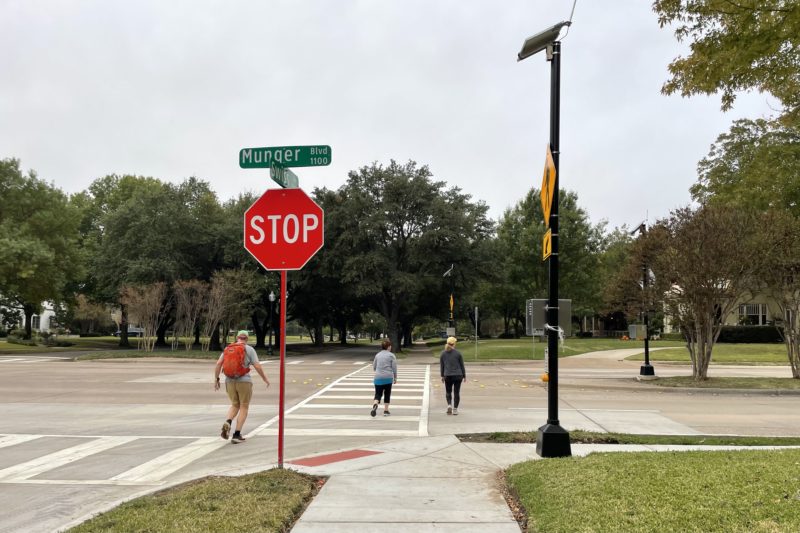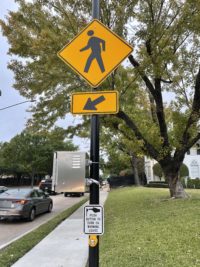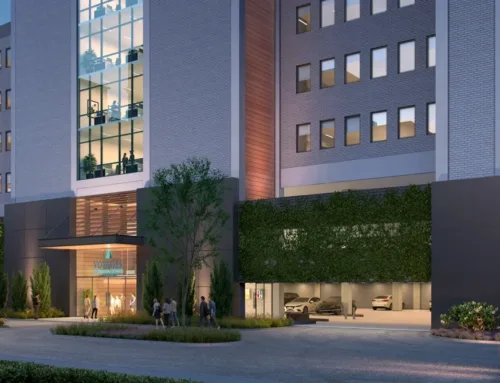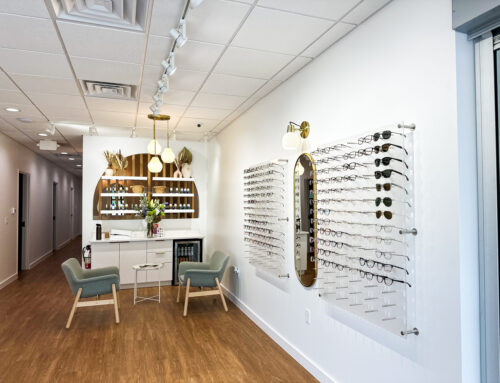
Pedestrians cross Munger Boulevard on Swiss. Photo by Renee Umsted.
Thousands of kids and parents visit Swiss Avenue each Halloween. And this year, crossing one major intersection in the neighborhood was much safer.
That’s because of the new rectangular rapid-flashing beacons, which were installed at the Munger-Swiss intersection just in time for the holiday, says David Dean, a resident of the historic district for over 20 years and member of its Alliance Against Crime.
“When a person is in the crosswalk that’s delineated with the right markings designated by the city, and those yellow lights are on, right-of-way is firmly established for the pedestrian or the bicyclist,” Dean says. “So cars have to come to a stop in both directions.”
Around 18 months ago, a Swiss Avenue resident started conversations about these traffic-calming measures. Neighbors agreed they were needed, knowing about the weekly collisions that occur at the Munger-Swiss intersection and other major ones nearby.
The Dallas Department of Transportation was included from the beginning. Soon after, the offices of District 14 and District 2 City Council members, who represent residents in the historic district, became involved. Around the same time, the Alliance Against Crime began working with the Dallas Police Department to launch a Volunteers in Patrol program, and the department was looped in to the traffic-calming plans. Because the Swiss Avenue Linear Park runs straight down Swiss Avenue, there was also collaboration with Dallas Park and Recreation.
“These are not macro, big, sexy policy things that affect the country,” Dean says. “These are micro, right there at the block level. But they’re very real and important not only for us, but all those people that visit our parks and drive our roads.”

A rectangular rapid-flashing beacon installed at the Swiss Avenue-Munger Boulevard intersection. Photo by Renee Umsted.
In 2020, Dallas recorded 66 pedestrian deaths, according to the National Highway Traffic Safety Administration. It ranks fifth among cities in the United States with a population greater than 50,000, behind Los Angeles, New York, Houston and Phoenix.
The beacons coincide with Dallas’ Vision Zero plan, which aims to eliminate all traffic-related deaths and cut in half the number of severe injuries from crashes, all by 2030.
Dean also says the additions, placed at all corners of the intersection, are a “dramatic improvement” to walkability in East Dallas.
The hope is that the flashing beacons slow down drivers and call more attention to pedestrians. But Dean says if they’re not as effective as needed, there have been discussions about adding rumble strips, which can be found Downtown.
“When you’re driving over them, you know it,” he says. “You can kind of feel it in your tires, and you can kind of hear it a little bit inside the vehicle, so it gets your attention.”
Beacons will only flash if pedestrians activate them by pushing a button, so Dean and other neighborhood leaders are working on educating and informing residents about the new devices. Talks about what can be done at Swiss Avenue’s intersections with La Vista and Fitzhugh have already started, involving affected residents and the Dallas Department of Transportation.
“We’re hoping, quite frankly, that what we do and what the Swiss Avenue Historic District does in the area of community engagement, solving problems, might be able to help other neighborhoods organize, too,” he says.





